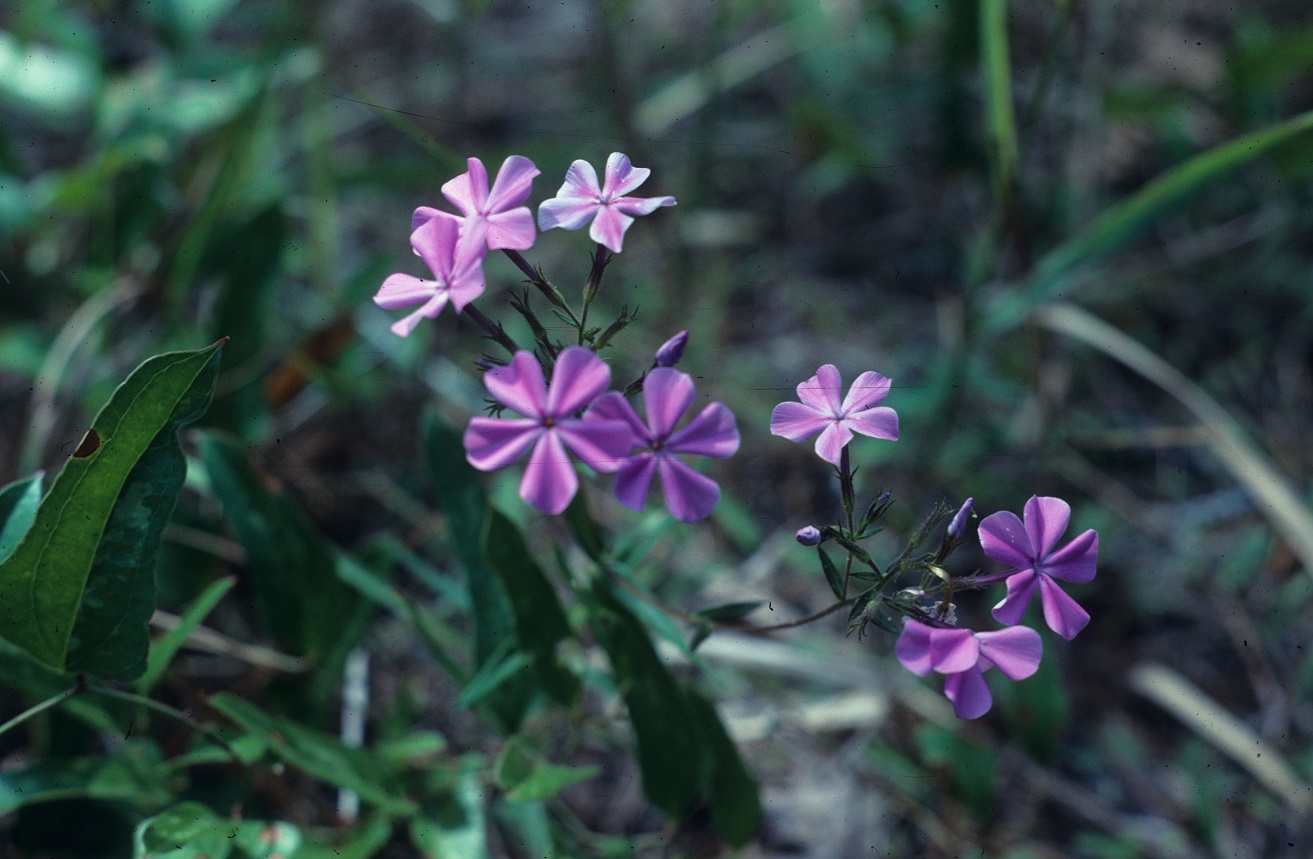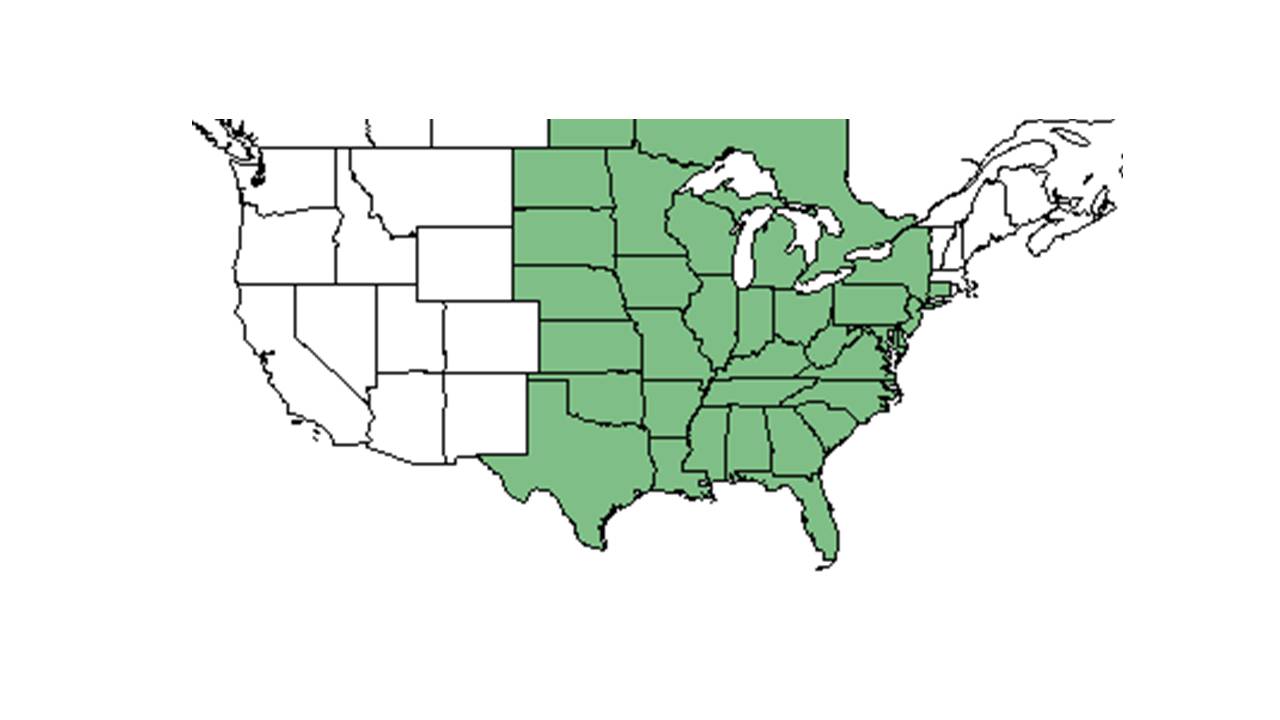Phlox pilosa
| Phlox pilosa | |
|---|---|

| |
| Photo taken by Gil Nelson | |
| Scientific classification | |
| Kingdom: | Plantae |
| Division: | Magnoliophyta - Flowering plants |
| Class: | Magnoliopsida – Dicotyledons |
| Order: | Solanales |
| Family: | Polemoniaceae |
| Genus: | Phlox |
| Species: | P. pilosa |
| Binomial name | |
| Phlox pilosa L. | |

| |
| Natural range of Phlox pilosa from USDA NRCS Plants Database. | |
Common name: Downy phlox
Contents
[hide]Taxonomic notes
Synonyms: Phlox pilosa Linnaeus ssp. pilosa; P. pilosa var. pilosa
Description
"Herbaceous or subligneous, short rhizomatous or stoloniferous perennials. Leaves simple, entire, mostly subsessile. Opposite with bases connected by a stipular line or the upper cauline leaves subopposite, rarely alternate. Inflorescence cymose or paniculate-same length as the tube, tube sinuses semi-transparent; corolla salverform, the lobes cuneate or widely or narrowly obovate to suborbicular, apex entire, erose, or notched; anthers unequally inserted near base of corolla tube and included, or at the mouth of the tube and 1 or more usually exserted; styles 3, almost completely fused or appearing cleft or parted. Capsule papery, subglobose or ellipsoid, 4-6 mm long, loculicdial. A genus of considerable horticultural interest and taxonomic difficulty." [1]
"Slender, erect, flowering stems 2-5 dm tall, often with 2-5 branches from upper nodes, sterile shoots absent or not persistent. Nodes 6-12 on the flowering stems, leaves narrowly lanceolate, the largest 4-8 cm long, 3-8 mm wide, rarely wider, pubescent or glabrate, margins ciliate. Inflorescence open. Calyx 6-12 mm long, the lobes subulate; corolla pink to dark lavender, rarely white, the tube usually pubescent, 11-16 mm long, lobes obovate, 8-12 mm long, apiculate; stamens included; styles cleft ca. ½ their length." [1]
Distribution
Ecology
Habitat
Areas P. pilosa can be found include limestone glades, edge of pine-oak woodlands, pine/hardwood areas, semi-boggy slopes of longleaf pine savanna, burned upland longleaf pinelands and in mesic shaded woodlands by streamlet (FSU Herbarium). Has been found to grow in dry loamy sand (FSU Herbarium).
P. pilosa has been found to grow along highways and the remnants of slightly disturbed woodland habitats (FSU Herbarium).
Associated species include Rhynchospora divergens, Sporobolus vaginiflorus, slash pine and longleaf pine (FSU Herbarium).
Phenology
Flowering has been observed March through May (FSU Herbarium).
Seed dispersal
According to Kay Kirkman, a plant ecologist, this species disperses by explosion mechanisms or by ants. [2]
Fire ecology
P. pilosa shows delayed flowering in response to early-season burning. [3]
Conservation and management
Cultivation and restoration
Photo Gallery
References and notes
Florida State University Robert K. Godfrey Herbarium database. URL: http://herbarium.bio.fsu.edu. Last accessed: July 2015. Collectors: Loran C. Anderson, Wilson Baker, Ann F. Johnson, R. A. Norris, Robert K. Godfrey, R. Komarek, T. MacClendon, K. MacClendon. States and Counties: Florida: Calhoun, Gadsden, Hamilton, Jackson, Leon, Wakulla. Georgia: Grady, Thomas. Compiled by Tall Timbers Research Station and Land Conservancy.
- ↑ Jump up to: 1.0 1.1 Radford, Albert E., Harry E. Ahles, and C. Ritchie Bell. Manual of the Vascular Flora of the Carolinas. 1964, 1968. The University of North Carolina Press. 869-870. Print.
- Jump up ↑ Kay Kirkman, unpublished data, 2015.
- Jump up ↑ Pavlovic, N. B., S. A. Leicht-Young, et al. (2011). "Short-term effects of burn season on flowering phenology of savanna plants." Plant Ecology 212: 611-625.